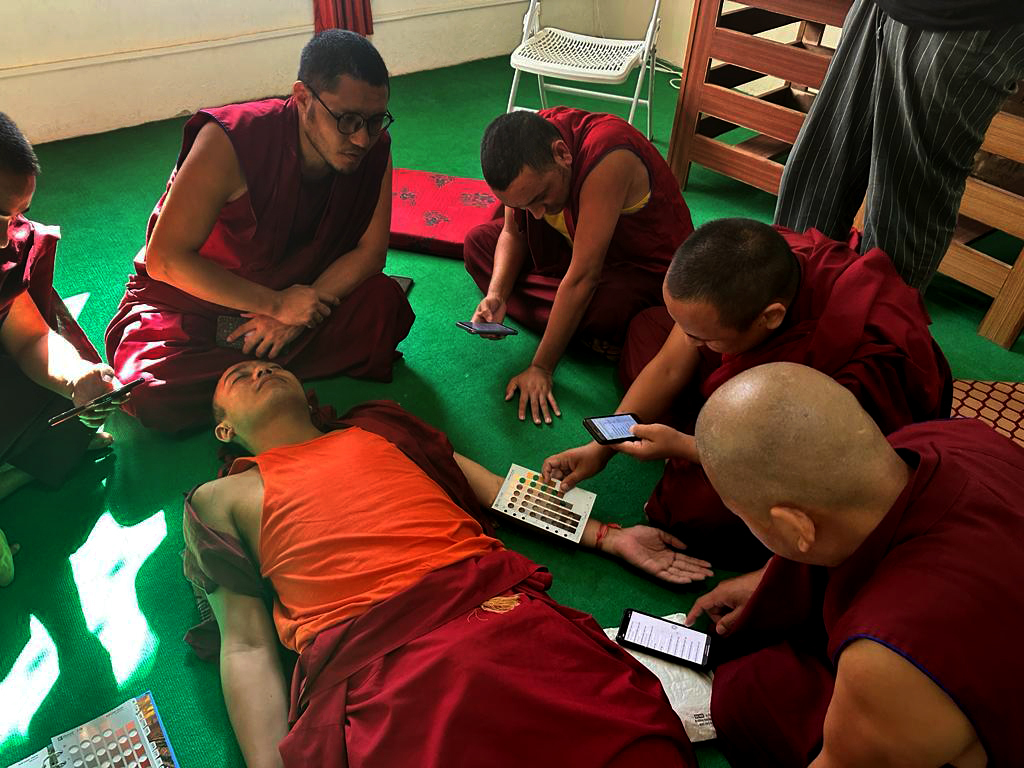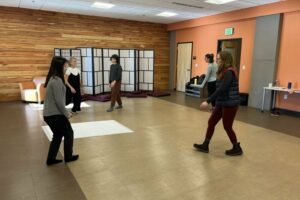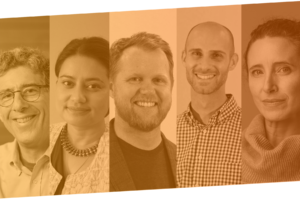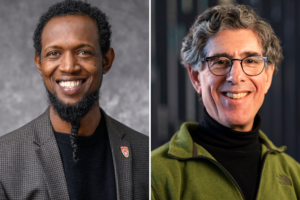A pioneering study into what occurs to the body after death is quietly unfolding in Tibetan monastic communities in India. A group of monastics, scientists, medical professionals and forensic experts are working together to explore a rare postmortem meditative state known as tukdam in these communities.
Researchers from the Center for Healthy Minds at the University of Wisconsin–Madison together with the Russian Academy of Sciences, Tibetan medical experts and senior monastic scholars in the leading Buddhist monastic universities in India are working to document tukdam to gain a deeper understanding of its effects on postmortem physiology and its cultural significance.
The state of tukdam is typically achieved only after a lifetime of meditative practice and prolonged meditation during the dying process. Tibetan Buddhists view reaching this meditative state as a testament to having lived a moral and ethical life, and both the state itself and its observation are considered highly sacred. When tukdam is reached, a person’s body shows a markedly slower rate of decomposition after death.
In their latest paper, published in Forensic Science International: Reports, the researchers report two cases of tukdam in which postmortem decomposition was delayed for a period of days and even weeks before rapidly accelerating.
“One of the remarkable aspects for individuals who achieve tukdam is that they appear very radiant several days after death,” said lead researcher Tawni Tidwell from the Center for Healthy Minds. “There’s also no putrid odor until later, and we don't see a lot of the early signs of decomposition.”
Studying a rare state
This rare opportunity to study individuals who may have manipulated their physiology through spiritual practices would not be possible without support from His Holiness the 14th Dalai Lama Tenzin Gyatso and a 65-member international research team, which includes monastic researchers trained in scientific techniques including forensic measures.
“Tukdam can be difficult to study because it is a sensitive cultural phenomenon that requires the community to accept and trust the research team,” said Tidwell. “It is also challenging to make early observations because tukdam is not typically reported until three days after death, when it is considered a definitive state. However, His Holiness gave the project team permission to make observations as early as the attendants or the family say it is okay to do so, and the team was careful to use a high degree of cultural sensitivity in making the observations.”
After death, postmortem changes typically follow a predictable timeline depending on a number of environmental variables, with pallor mortis generally occurring within 24 hours, rigor mortis within 24 to 48 hours, livor mortis (blood pooling) within the first 72 hours and decomposition starting around the 72-hour mark. Markers of decomposition such as changes in skin color and elasticity, excretions, odors and the presence of insects are readily observable in the days that follow.

For the new study, the researchers observed two individuals for 19 and 31 days (up to days 27 and 38 after death, respectively) and found a significantly different timeline, where decomposition was much slower than expected followed by a sudden, rapid deterioration. This rapid decomposition was unusually pronounced, with strong odors and other indicators of advanced decay emerging weeks later than expected.
A key aspect of the study was the researchers’ use of Munsell color system cards to assess changes in skin color. This innovation, which came from Leslie Eisenberg, a senior research fellow at the Center for Healthy Minds and the team's forensic anthropologist, offers a new way to document the slowed paling (or longer retention of a life-like appearance) associated with tukdam. These standardized color cards were originally developed for soil science and have been used in medical applications, but this was the first time they have been applied in a forensic application.
Eisenberg and the team’s forensic pathologist, Alexander Fedotov of the Ryazan Bureau of Forensic Expertise in Russia, reviewed each case in the study to provide their independent forensic assessments. These two cases represent the longest cases assessed to date.
A fresh view on forensics
The atypical decomposition patterns observed in the study bring into question some standard forensic methods used to estimate time of death and point to the need for further research to better account for potential cultural variability in how bodies decompose.
Since traditional techniques for estimating time since death were developed across large populations under normal dying contexts – from sudden, unnatural deaths to slow transitions in diseased states –they may not be accurate for cases where the dying process may have been influenced by spiritual or other practices.
“In the last 12 months, 31 papers concerning the postmortem interval have been published in the Journal of Forensic Sciences, an indication of how important this topic is in forensic science,” said Diane L. France, a forensic anthropologist and director of the Human Identification Laboratory of Colorado who was not involved in the study. “We are learning a significant amount about the external factors driving decomposition (e.g., temperature, humidity and insects), but we know relatively little about the internal factors (e.g., microbial activity). The tukdam phenomenon is unique and has the potential to greatly add to our understanding of the pattern and rate of the decomposition process.”
Culture’s role in the dying experience
In North America and Europe, bodies are typically moved soon after cardiac arrest, loss of cardiopulmonary function or brain death. By contrast, in the Tibetan culture the body is left to rest for three days based on the belief that a subtle form of a person’s consciousness remains with their body for a period of time after death.
"Our study draws attention to the different cultural approaches to the dying process and how we can best support communities of all different cultures in their own practices of caring for their loved ones during the dying transition and post-death process,” said Tidwell.
She adds that tukdam is intertwined with the Tibetan Buddhist belief that death offers a unique opportunity to witness the true nature of the mind. Individuals who enter this mediative state have spent their lives cultivating compassion, with the aim of returning in their next reincarnation to benefit others.
“From the Tibetan Buddhist perspective, anyone has the opportunity to recognize the nature of mind and enter this state,” said Geshe Ngawang Norbu, one of the study’s co-authors. “However, the individuals who achieve such a state tend to be those who lived a life of renunciation and committed themselves to a lifetime of meditative practice that allows them to use the particular context of the dying state to gain realization and exhibit these rare external signs.”
Geshe Norbu and Geshe Lodoe Sangpo are the Associate Directors of the Tukdam Study and Field Supervisors for Units A and B, respectively, of the Russian Science Centers where the Tukdam Study field collaborations are based.
“Because Buddhist practitioners view the dying state with reverence and as a critical physiological opportunity of the coarse body to disassociate from the subtle mind, a process they have been rehearsing through a variety of practice techniques throughout their lives, they are able to manifest signs at the time of death indicative of their achievement,” said Geshe Sangpo. “Their lack of fear in entering the dying state and, instead, their compassionate resolve that realization in such a state will allow them to bring greater benefit to sentient beings in the next reincarnation is a key context for their capacity at this critical transitional time.”
From death, learning more about living
The researchers are now working to expand their understanding of the physiological and microbial changes associated with death, which could lead to the development of new forensic indicators for determining time since death along with new insights into healthy living.
As part of this work, they are partnering with Manjunatha Venkataswamy and Priyamvada Sharma, scientists from the National Institute of Mental Health and Neuro Sciences in Bangalore, as well as Joe Adserias-Garriga from Mercyhurst University to study postmortem changes in the oral microbiome, which might help explain the unusual decomposition patterns observed. They also plan to work with Clément Martin from Université de Liège to analyze the volatile organic compounds (VOCs) associated with tukdam, in which bodies are often observed to have a pleasant floral scent.
The researchers also plan to initiate a longitudinal study on healthy aging within the Tibetan Buddhist monastic community. Lower rates of Alzheimer's and dementia have been observed in this group, and the researchers want to understand how certain lifestyle, dietary or religious practices might contribute to healthier aging. They hope to integrate these findings with those from a study led by their Russian Academy of Sciences collaborators that has been examining the physiology of living meditation practitioners by examining patterns of heat and blood flow in body tissues.
“We want to combine data from these healthy aging studies with the microbiome and VOC analyses to better understand the practices of the living as well as dying in these Buddhist monastic communities,” said Tidwell. “This could not only enhance our knowledge of the health and aging process in this unique cultural setting but may also uncover broader insights for improving well-being and end-of-life care across cultures.”
The new study represents an important step forward in the scientific investigation of tukdam. A previous study focusing on measuring brain activity—the first to report systematic observations of tukdam in a peer-reviewed journal—did not find evidence of residual brain activity among individuals in tukdam, but helped to catalyze conversations within the scientific community about the potential insights that could be gained with further research.
Marcella H. Sorg, a research professor at the University of Maine – Orono who was not involved in the study, says that this dual case study addresses a persistent research deficit in forensic taphonomy: the need to expand our understanding of the wide range of differences in microenvironmental contexts and decedent characteristics and their potential association with the processes and conditions that affect biological remains after death.
“The authors present a disciplined documentation of those differences in a context rarely before studied, an indoor monastic setting in India,” said Sorg. “Additionally, they explore a new question: Can the actions of the decedent just proximate to death influence decomposition processes?”
By Anne Johnson
Telo Rinpoche serves as the administrative director for the Tukdam Project, and Richard Davidson and Svyatoslav Medvedev jointly serve as the science directors in the capacity of principal investigators. Elena Kokurina is the project lead for the Russian team, and Tawni Tidwell is the project lead for the Center for Healthy Minds team.






